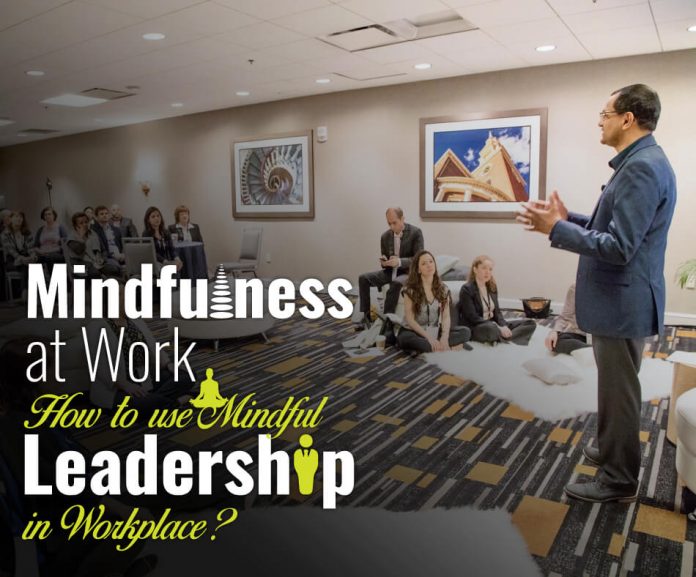Workplace is a fast-paced setting that usually has a stressful environment. Many companies and offices even now have certain programs and activities for their employees to help manage stress and take good care of their mental, emotional and physical health.
This is then where mindfulness comes in. With the number of people aiming to be more in tune with themselves and mindful of their current states, it is not surprising why many aspects and settings of society try to have this approach.
But, what does mindfulness at workplace mean? How does it work, and where should you begin? This post may help you find some answers.
All About Mindfulness at Work
There are several ways to describe and define mindfulness. But, to put it very simply, it is a state wherein an individual is focused on the present while being conscious and aware of the surroundings.
People who practice mindfulness do not dwell on the past and future. Hence, it does not involve any worries or fears about what is not in the present time.
Now, mindfulness at workplace is simply practicing being mindful in an office setting.
Benefits of Mindfulness in Business, Workplace

So, what are the benefits of using this approach in the workplace? Does it have significant and positive impacts on the employees, employers, and the company?
If you are asking the same questions, these pointers may help you find the answers:
-
Stress Reduction
Mindfulness practices can reduce stress in the workplace. This is because it nearly eliminates all worries of the past and future.
As we all know, stress usually comes from overthinking and worrying. So, if employees are too focused on the present task, stress and any other negative thoughts can be eradicated.
-
Better Task Performance
In relation to stress reduction, mindfulness in the workplace can lead to better task performance. This is because everyone has concentration toward the job at hand, making them focus on the quality of the work, in all aspects.
-
Increased Productivity
Productivity can be improved, as well, when mindfulness is present in the workplace. Given that the employees are focused on their work at present, distractions can be eliminated. Hence, more work can be done, effectively and efficiently, without hampering the quality.
-
Improved Social Relationships, Links
Apart from the advantages that can be obtained for the actual work or tasks, employees can also get benefits that impact their relationships in the workplace. This is because mindfulness can improve social links.
There are several ways it can positively affect relationships or social circles. One of them being the reduction of stress and worries, causing individuals to have much better and happier states.
-
Highlighted Collaborative Efforts
In parallelism with the much-developed links with others, mindfulness leads to a workplace with a better and more effective collaborative effort.
When everyone in the office gets along well, tensions and negative vibes between the members are not very apparent. Accordingly, this leads to better results when doing group activities and projects.
-
Coping Skills Toward Changes
In one study, it is found that mindfulness can also help staff and employees easily cope with changes. It is worth noting that organizational changes are usually apparent in the workplace. However, not every workplace change leads to success due to employee resistance.
-
Enhanced Innovation, Creativity
Creativity is essential in the workplace. This is because it leads to divergent thinking, which refers to the ability to come up with new ideas and innovative solutions.
There are a few ways to enhance creativity in the workplace. Among all the most effective ones involve the practice of mindfulness.
Remember, mindfulness helps individuals get better focus and concentration. This means that distractions can be eliminated, leading them to think of more creative solutions and ideas.
Introducing Mindfulness In The Workplace

There are several ways to introduce mindfulness in the workplace. This is also easy, especially if you are in a managerial position or the leadership of the company.
It is worth noting, however, that it still comes with challenges. No matter how easy or convenient for you, introducing new approaches and practices will have a few bumps along the way.
Even so, do not get discouraged, especially if you are certain that it will help you, your staff, the rest of the employees, and the company.
All About Mindful Leadership
Every company or venture has a leader. If you are one, being mindful is very beneficial. This is why many companies and offices now integrate mindfulness, Zenfulspirit.com states.
A mindful leader, you are not afraid or worried to look at yourself and assess your abilities and skills as a head of an organization. You also put your ego and pride aside, and even your own interests, for the good of the company and the venture.
The Links Between Mindfulness and Leadership
With the benefits and popularity of mindfulness these days, experts and scholars are now doing various studies to understand it better. There are now even research papers, centering on the links between mindfulness and other aspects, like leadership.
According to one of the latest findings, experts found that mindfulness practices can improve leadership skills and effectiveness. In addition, a mindful leader can reportedly enhance the job performance of the staff and even decrease employee exhaustion.
Practicing Mindful Leadership In Workplace
Now, as a leader, how would you practice and teach mindfulness in the workplace? How would you manifest your “mindful leadership” approach to your staff?
Here are some things that you may want to check out as a guide:
-
Training Sessions
Having training sessions that mainly tackle mindfulness is one of the most effective ways to introduce it in the workplace. Try to integrate it into the “team-building” activities and programs.
It need not be grand, too. Just a session or two a month will already do the job.
-
During Breaks, Free Periods
A training session may seem too formal and official. So, if you want a more practical and not-too-serious approach, you may do quick chit-chats about mindfulness during the breaks and free periods.
-
After Meetings
You may also do this every after an office meeting. Again, it need not be grand nor formal. Just a simple “catch-up” with your staff will already do. Ensure, however, that you are not disrupting their pre-planned schedules.
Conclusion
Practicing mindfulness involves a lot of activities. But, what works for others may not work for some.
The same dynamic applies to organizations, as well, like the workplace or a company. Accordingly, it may be a long process to find the best mindfulness approach for the staff and employees. Nevertheless, a mindful leader will surely find out the best strategies and techniques.



































